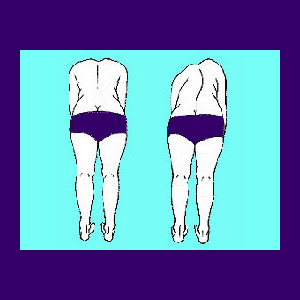
The diagnosis of scoliosis is a simple and straightforward process in most instances. Most elementary, middle and high schools have regularly scheduled spinal curvature exams, performed either by the school nurse or by a visiting doctor. Any general physician or chiropractor can diagnose a spinal curvature during a physical exam. As long as a person receives even the minimal amount of normal preventive health monitoring, the chances that an atypical curvature will be discovered young are very high.
Once scoliosis is suspected, doctors will follow-up using diagnostic imaging studies to expand the information available about the nature of the condition. X-rays will be taken to confirm a diagnosis and to determine the exact degree of curvature.
Remember, scoliosis is measured in degrees of atypical curvature, much in the same manner that one would measure and quantify an angle in geometry. Once the measurements have been completed, the doctor will decide if additional testing needs to be performed. If pain or neurological dysfunction exist, an MRI will usually also be ordered to better image the potential effects of the abnormal curvature on the spinal cord, spinal nerves and possibly, the internal organs. Once the curve has been thoroughly evaluated, the physician will have a good idea whether treatment will be needed and if so, what modalities will provide the best results.
This dialog examines the diagnostic process for scoliotic curvatures of the vertebral column.
Diagnosis of Scoliosis Varieties
Congenital scoliosis is not usually discovered before birth, even though it exists in the fetal stage. A fetus will rarely be subjected to any x-rays, due to the increased risk of birth defects. Even if the fetus were to have x-rays, the fetal bones are still soft and tiny. Fetal bones do not image well enough to be seen clearly in many cases.
Adult scoliosis is a condition caused by some other underlying problem. A back injury may cause an unusual curvature to develop in the spine. A degenerative process, such as osteoarthritis, can also cause an atypical spinal curve to exist. The existence of abnormal front to back curvatures including hyper and hypo versions of lordosis and kyphosis will increase the compounded risk for scoliosis to exist, as well.
Idiopathic scoliosis is diagnosed when a child is usually between 10 and 13. It can occur much younger (often called juvenile scoliosis) or slightly older. The younger the child is when they are diagnosed, the greater the risk of developing a severe curvature. Spinal curves are worsened by rapid growth. The more a child still has to grow, the greater the chance that the curve will become problematic. This is the type of atypical curvature best treated using conservative back braces, which help to prevent the worsening of the condition.
Scoliosis Diagnosis
My schools all had a scoliosis check every year, from 2nd to 12th grade. I raised a red flag with more than one school nurse for this condition. I followed up with my doctor as a child and was told that my back was fine year after year.
When I began to have back pain at 16, my first care provider was a chiropractor. This doctor did diagnose scoliosis in me. I remember feeling devastated. I did not want to wear a brace or have a physical defect. This chiropractor blamed most of my pain on this spinal curve and its resulting muscle imbalances. I was told that his treatments would correct the curve. They never did. Years later, I discovered that my curve was very slight and normal. It did not cause me any pain. My spinal curve was just the first of many anatomical scapegoats used to explain my horrible back pain.
Please, be sure that this fate does not befall your child (or yourself). Learn the facts about scoliosis and do not let any doctor or chiropractor frighten you, or your impressionable offspring, into suffering pain unnecessarily.




